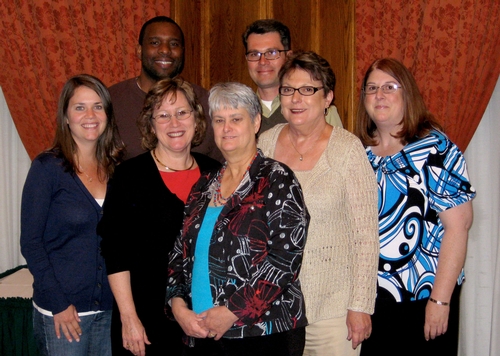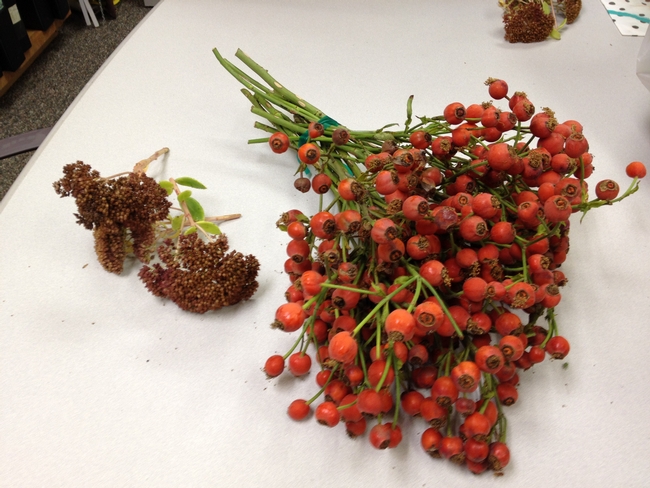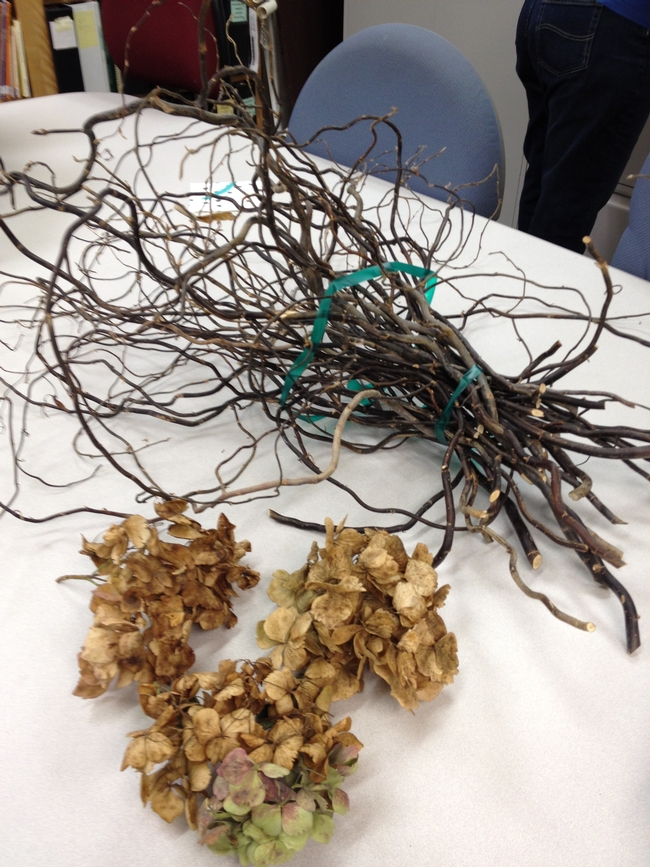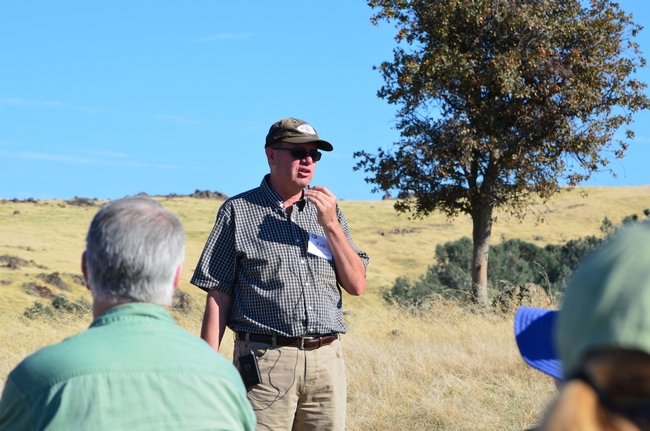UC Blogs
Nathaniel and Roche Receive ANR's 2011 Distinguished Service Award
The University of California Agriculture and Natural Resources (ANR) has announced the names of those who received the 2011 ANR Distinguished Service Awards. The awards are presented biennially to ANR staff members for their outstanding contributions to the teaching, research and public service mission of ANR.
UC Cooperative Extension in LA County is pleased to congratulate Keith Nathaniel (4-H Youth Development advisor) and Brenda Roche (Nutrition, Family and Consumer Science advisor), who are among the 12 who received this mark of distinction. They were part of a seven-member team that received the award in the category of Outstanding Team with the development of "Money Talks for Teens"--a unique resource of financial information for teens and young adults.
Based on a needs assessment study, the team created a hands-on, interactive online program to guide teens and young adults in making important financial decisions. Available in English and Spanish, "Money Talks" consists of four series of lessons that start with basic personal finance information, and it goes on to cover topics such as banking, credit and working.
Pre and post evaluations have documented the benefits to teens. More importantly, the series is highly regarded by educators in California and the U.S.
In a leadership role, Nathaniel guides and develops 4-H programs in LA County. The programs offer youth valuable learning experiences that help them grow into productive leaders and good citizens.
Like Nathaniel, Roche designs programs for residents of LA County. Paying specific attention to the areas of nutrition and consumer science, she evaluates trends and issues and maintains knowledge of current research information.
All team members will receive individual certificates and share $5,000.
For more information on "Money Talks for Teens," please visit www.moneytalks4teens.org.
Gathering from the Garden
We are gearing up for our annual Wreath Workshop. For those of you who are unfamiliar with the workshop, I will tell you more. Every first Saturday of December, the Master Gardeners (MGs) hold a workshop where the public pays to come in and make fresh wreaths out of materials gathered from the garden.
Every year, we try to think outside the box and find a new plant or pod that will dry nicely to adorn the wreaths made at the workshop. Just last year, we discovered that Sedum 'Autumn Joy' works well as a decoration. We cut the flowers with a bit of stem and then dry them. There is a small team of MGs who will spray paint the decorations. It turned out the sedum were stunning in the metallic colors and a big hit at the workshop.
The flowers and materials vary every year. This year it looks like we will have an abundance of hydrangea flowers, but are very low on the agapanthus inflorescences. These agapanthus inflorescences look like fireworks that have burst, especially after we spray them red or gold.
Besides using plant materials, the MGs gather other items like feathers, shells, dried fruit, interesting twigs or bark to add to the plethora of natural materials used for the wreath decorations. If you know of something interesting and good to use, let us know!
This year the Wreath Workshop will be held on December 3 from 1:00 p.m. to 4:00 p.m. at the Buck Mansion in Vacaville. The cost of the workshop is $45.00 and entitles the participant to create one wreath. The fee covers the metal wreath frame, paddle wire, bow, greens, natural decorations, and refreshments-made by the Master Gardeners. For more information contact me at 707-784-1321 or jmbaumbach@ucdavis.edu.
Listeria outbreak renews call for federal regulations
UC food safety expert Michele Jay-Russell said federal officials should draw inspiration from the Leafy Green Marketing Agreement when they finalize the new regulations. California and Arizona put the agreement in place after the 2006 spinach E. coli outbreak, the article said. It includes a wide range of food safety metrics, from how often to test irrigation water to the optimal method of composting and proper use of animal manures.
Jay-Russell also said research into animal biology could help identify new strategies to prevent or treat listeria. Unlike other pathogens such as E. coli, listeria can sicken both humans and animals. Because sheep, goats and cattle develop similar symptoms to humans, she suggests studies of this parallel animal disease could lead to a better understanding of human illness.
Every day is Food Day
Cathryn Couch, The Santa Rosa Press Democrat
Sonoma County is blessed with a rich agricultural heritage and a strong local food culture. Today, growing interest and concern is merging with strong support from the Sonoma County Board of Supervisors and new opportunities for collaboration. Among the highlights of "exciting food happenings" listed in this article was the first county-wide Food Forum presented in January by the Sonoma County Food System Alliance. The alliance, together the Board of Supervisors and UC Cooperative Extension, gathered nearly 300 stakeholders to explore what’s working and identify what’s needed to create a healthy food system for all.
Resident, farming scientist outraged by city’s pruning job
Eiji Yamashita, Hanford Sentinel
UC Cooperative Extension farm advisor Bob Beede is outraged by the way three ornamental Bradford pear street trees near his home were pruned by the City of Hanford.
“They came in and butchered all of my lower foliage off my trees. If you talk to professional arborists, they’d tell you this is the wrong way to prune an ornamental tree,” Beede said.
Beede is a veteran farm advisor for the University of California Cooperative Extension in Kings County. He works closely with farmers in the area to improve their fruit tree production, the newspaper reported.
Your Basic Bee Book
Not all bees are honey bees. Not all floral visitors are bees. That's why we're glad to see the publication of Bee Basics: An Introduction to Our...
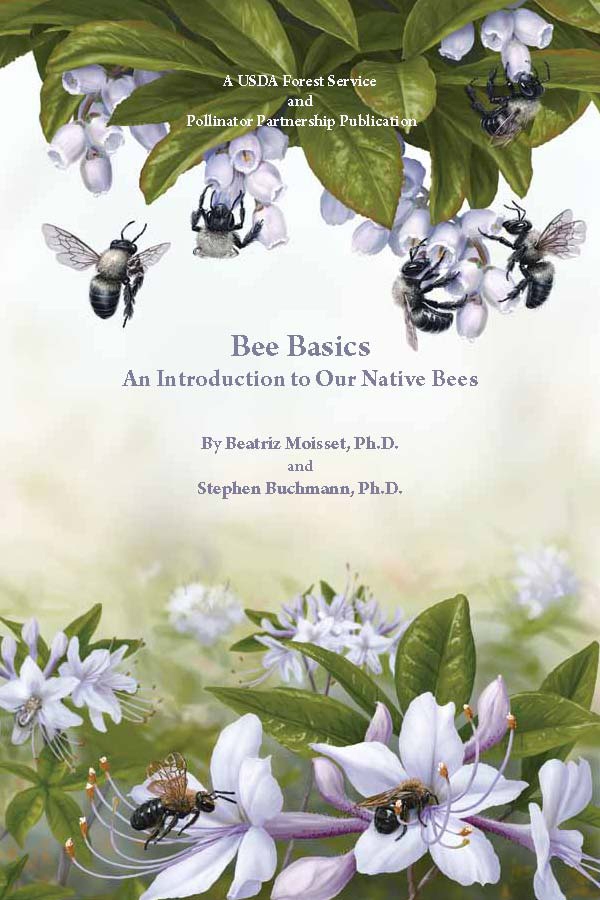
The cover of Bee Basics: An Introduction to Our Native Bees.
Diverse groups work together to enhance ecosystem services
Ecosystem services is a new term I've been hearing. Naturally I wondered, what are these services and is the ecosystem serving me? Ecosystem services are benefits we receive from the environment, such as clean water, open space, beautiful scenery, food production, wildlife habitat and diversity of plants and animals.
Not surprisingly, ecosystem services appeal to a broad audience. However, in the past, many people advocated for a single favored service and would fight with those who were partial to a different service. Now there is a strong trend toward partnerships.
“There’s been sea change on the topic of livestock management and rangeland ecosystem services,” said Ken Tate, UC Cooperative Extension watershed specialist based at UC Davis.
In a scenario 20 years ago, many ranchers would have focused solely on livestock production and ranch profit, while some environmental groups would have voiced concerns solely about wildlife habitat, and a government regulatory agency may have considered water quality the most important service. All parties have begun to recognize the connections among these important services and the need to work together to enhance all of them.
“If a ranch is not economically viable, then there is risk that land could become a shopping mall or some other development,” Tate explained. “A working ranch provides more ecosystem services than developments such as malls or suburban sprawl.”
A UC study published in the current issue of California Agriculture journal found that rangeland owners valued their land for its natural amenities as well as a financial investment.
Recently more than 120 people representing new and long-time ranchers, conservation groups, federal and state natural resources agencies, UC scientists and others gathered for the “Managing Rangeland for Ecosystem Services Workshop and Field Day” to discuss their common goals.
“Interest in this event reflects the growing interest in ecosystem services in a growing number of people,” said Tate, who organized the Oct. 18 event at UC’s Sierra Foothill Research and Extension Center, located 60 miles northeast of Sacramento. “Some people drove four or five hours to attend.”
At the workshop, Tate introduced the Prescribed Grazing for Ecosystem Service Project.
Despite their different backgrounds and ecosystem service priorities, there was no adversarial discussion among the attendees, observed participant Morgan Doran, UC Cooperative Extension livestock & natural resources advisor for Solano County.
“Everyone seemed to be in agreement that livestock are a useful tool in sustaining a healthy rangeland ecosystem,” Doran said. “And all seemed to acknowledge a need to better understand the balance of provisioning goods and services from rangeland systems.”
“We used to talk about one service at a time,” Tate said. “Now we talk about tradeoffs and synergies involved in managing for many services simultaneously. Optimizing water quality might take away from profitability. Talking about tradeoffs used to be confrontational. Now if we can understand the costs of these tradeoffs, there may be an individual or organization willing to pay for that difference. Basically, purchasing ecosystem services.”
Tate credits the workshop cosponsor California Rangeland Conservation Coalition for fostering the collaborative attitude. UC is among the more than 100 agricultural organizations, environmental interest groups, and state and federal agencies that have signed the California Rangeland Resolution, which recognizes that rangelands and the diversity of species they support largely exist due to grazing and other stewardship practices of the ranchers who own and manage the land.
“New people have come to the table who might not have gotten involved in a negative process,” Tate said. “The coalition is a positive approach to the conservation of rangelands, that makes it attractive to people. They are working together to achieve common goals.”
Tate is excited about Cooperative Extension’s role of trying to identify the information needs and conducting the research to supply this information.
Leslie Roche, a UC Davis postdoctoral researcher and presenter, remarked on the interest and enthusiasm in collaborative research and management demonstrated among the diverse group of attendees.
“Everyone is genuinely motivated to work together in bridging the gap between research and management communities on this topic, and that is really exciting," Roche said.
A list of speakers and their presentations for the workshop and field day are posted on the California Rangeland Watershed Laboratory website.
Although the term ecosystem service was unfamiliar to me, it’s not new. In 2000, United Nations Secretary-General Kofi Annan called for the Millennium Ecosystem Assessment. The objective of the project was, “to assess the consequences of ecosystem change for human well-being and the scientific basis for action needed to enhance the conservation and sustainable use of those systems and their contribution to human well-being.”


